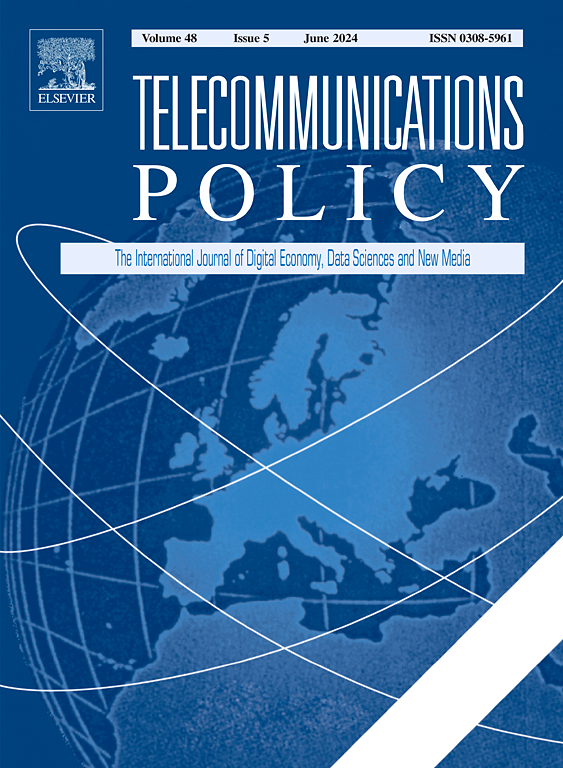Dualistic nature of the 4IR: Investigating the economy-wide impacts of the 4IR with a focus on Korean economy using a CGE analysis
IF 6.4
2区 管理学
Q1 COMMUNICATION
引用次数: 0
Abstract
This study quantitatively assesses and projects the socioeconomic impacts of the Fourth Industrial Revolution (4IR) with a focus on the South Korean economy. We have developed a policy simulation framework using a computable general equilibrium (CGE) model to capture the intricate interplay between 4IR-driven technological advances and various economic sectors. The CGE analysis endeavors to quantify the widespread implications of 4IR technological changes in terms of GDP, industrial production, labor market dynamics, and income distribution. The study constructs various policy scenarios predicated on the diffusion of 4IR technologies and the conditions within the labor market. From the CGE analysis, it is evident that the 4IR exerts a dualistic impact on the economic system, where it offers opportunities for economic growth and efficiency while concurrently risking an exacerbation of labor market polarization and income inequality. However, the simulation results imply that strategic workforce development, synchronized with the adoption of 4IR technologies through lifelong learning and skill enhancement, is essential to soften the adverse effects of swift technological advancements and to ensure the benefits of the 4IR are equitably distributed across the economy. Our study advocates for a balanced approach that recognizes the unique potential and challenges of each sector and aims to support the workforce across all levels of skill and income.
第四次工业革命的二元性质:利用CGE分析,以韩国经济为重点,研究第四次工业革命对整个经济的影响
本研究以韩国经济为重点,对第四次工业革命(4IR)的社会经济影响进行了定量评估和预测。我们利用可计算一般均衡(CGE)模型开发了一个政策模拟框架,以捕捉第四次工业革命驱动的技术进步与各经济部门之间错综复杂的相互作用。CGE 分析致力于量化 4IR 技术变革在国内生产总值、工业生产、劳动力市场动态和收入分配方面的广泛影响。研究根据 4IR 技术的传播和劳动力市场的状况,构建了各种政策情景。从专家咨询小组的分析中可以看出,4IR 对经济体系产生了双重影响,它在为经济增长和提高效率提供机遇的同时,也有可能加剧劳动力市场的两极分化和收入不平等。然而,模拟结果表明,通过终身学习和提高技能,与采用 4IR 技术同步进行的战略性劳动力发展,对于减轻技术快速进步的不利影响,确保 4IR 的利益在整个经济中公平分配至关重要。我们的研究主张采取一种平衡的方法,承认每个部门的独特潜力和挑战,并旨在支持所有技能和收入水平的劳动力。
本文章由计算机程序翻译,如有差异,请以英文原文为准。
求助全文
约1分钟内获得全文
求助全文
来源期刊

Telecommunications Policy
工程技术-电信学
CiteScore
10.80
自引率
12.50%
发文量
122
审稿时长
38 days
期刊介绍:
Telecommunications Policy is concerned with the impact of digitalization in the economy and society. The journal is multidisciplinary, encompassing conceptual, theoretical and empirical studies, quantitative as well as qualitative. The scope includes policy, regulation, and governance; big data, artificial intelligence and data science; new and traditional sectors encompassing new media and the platform economy; management, entrepreneurship, innovation and use. Contributions may explore these topics at national, regional and international levels, including issues confronting both developed and developing countries. The papers accepted by the journal meet high standards of analytical rigor and policy relevance.
 求助内容:
求助内容: 应助结果提醒方式:
应助结果提醒方式:


